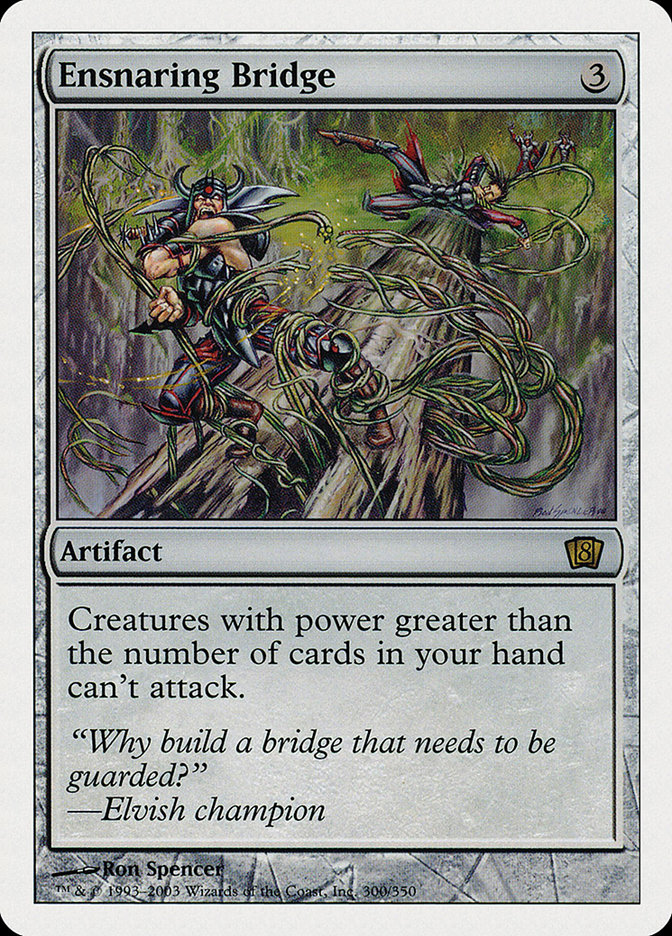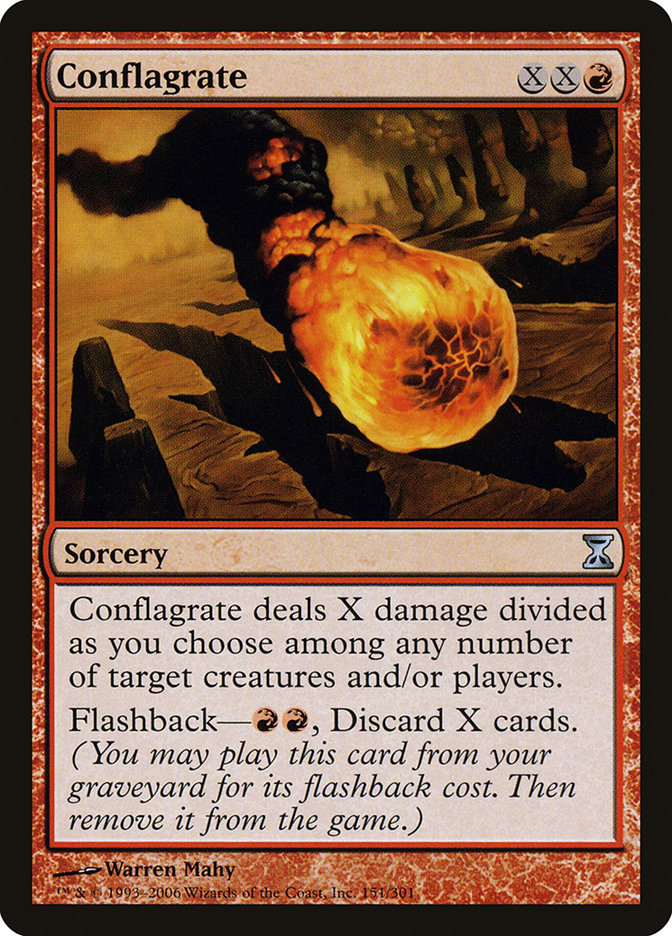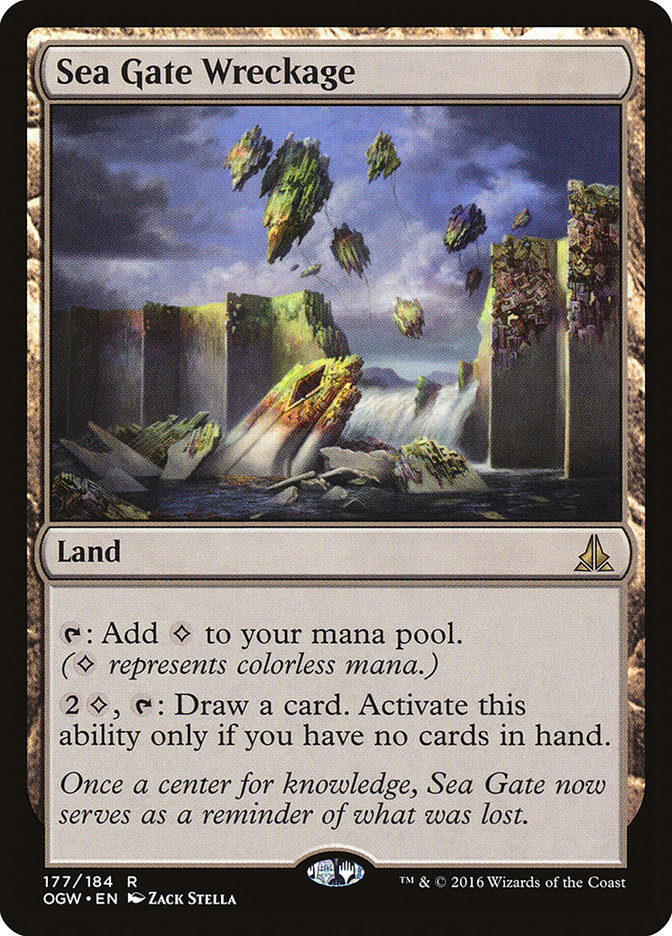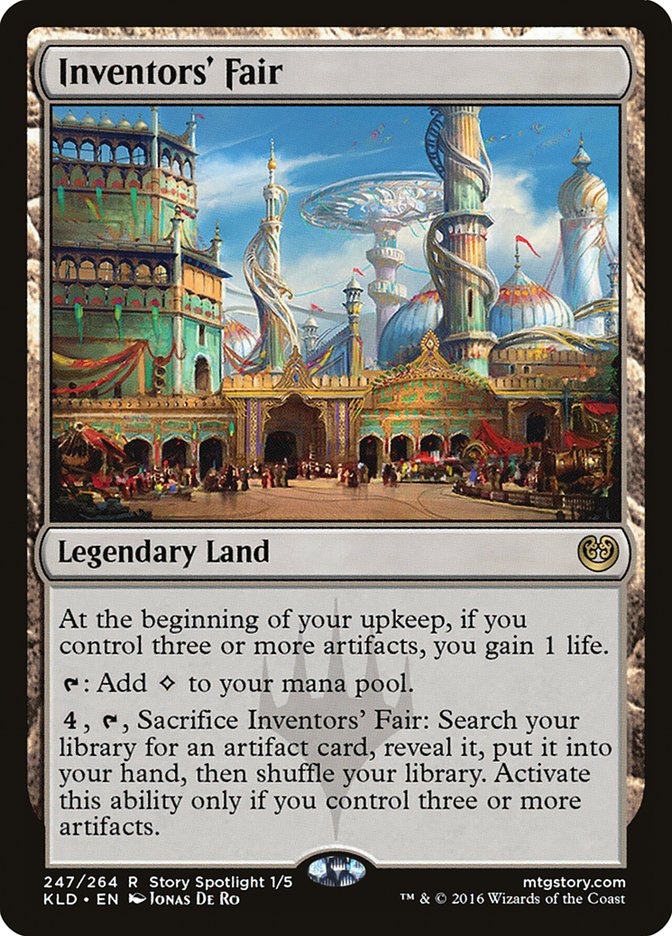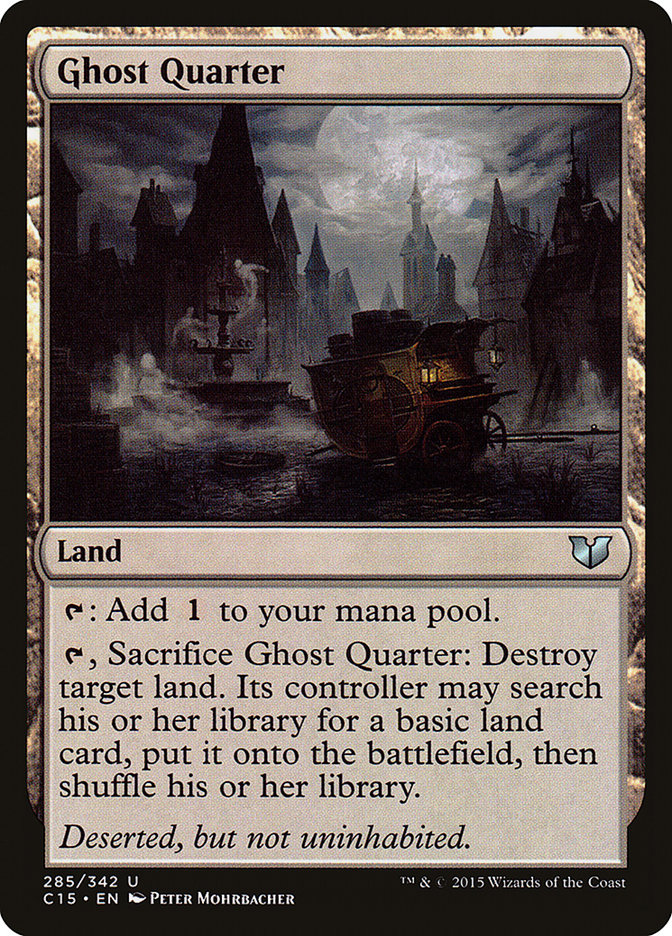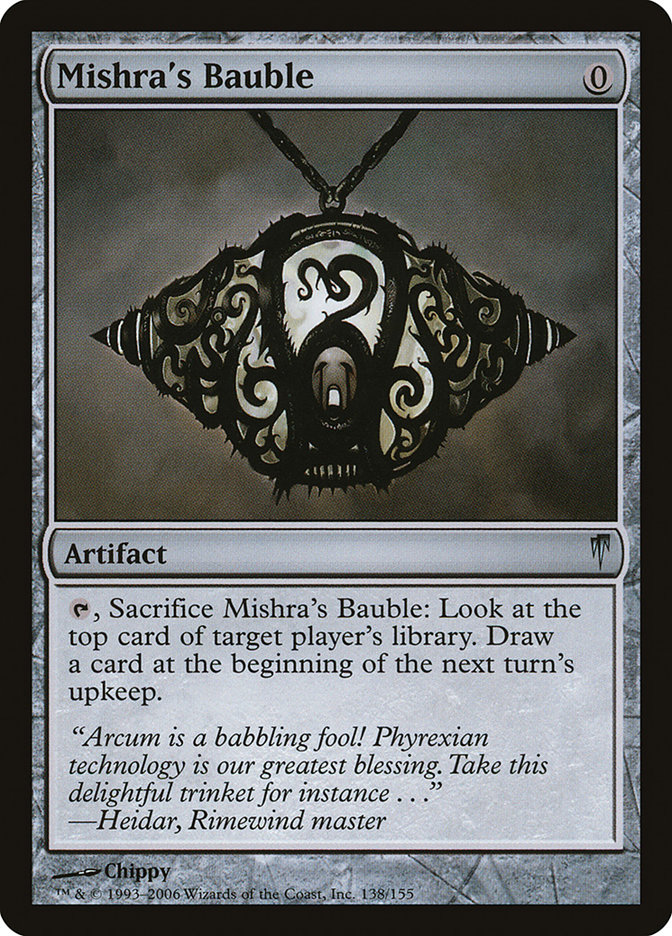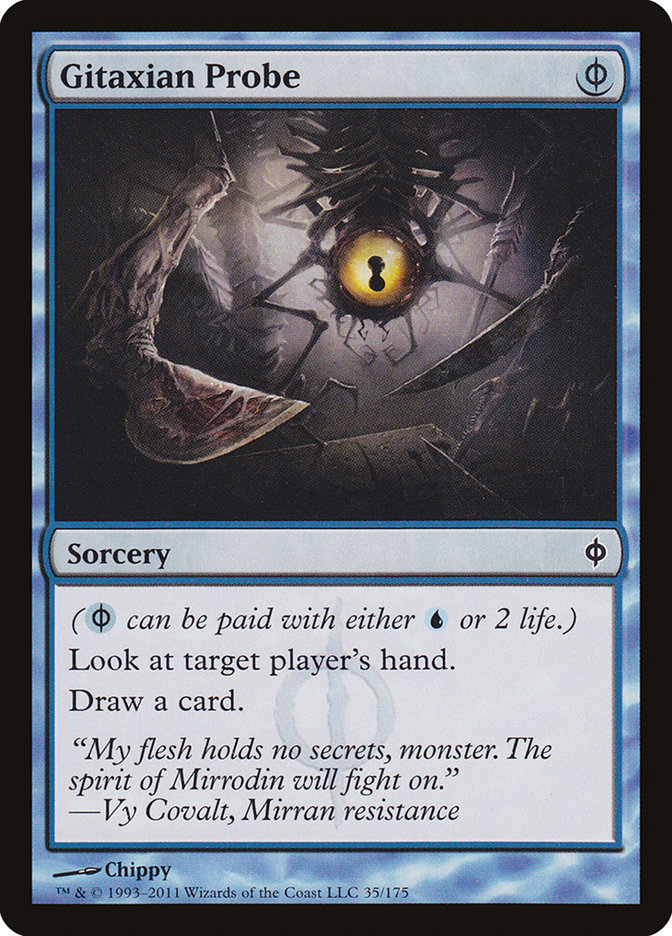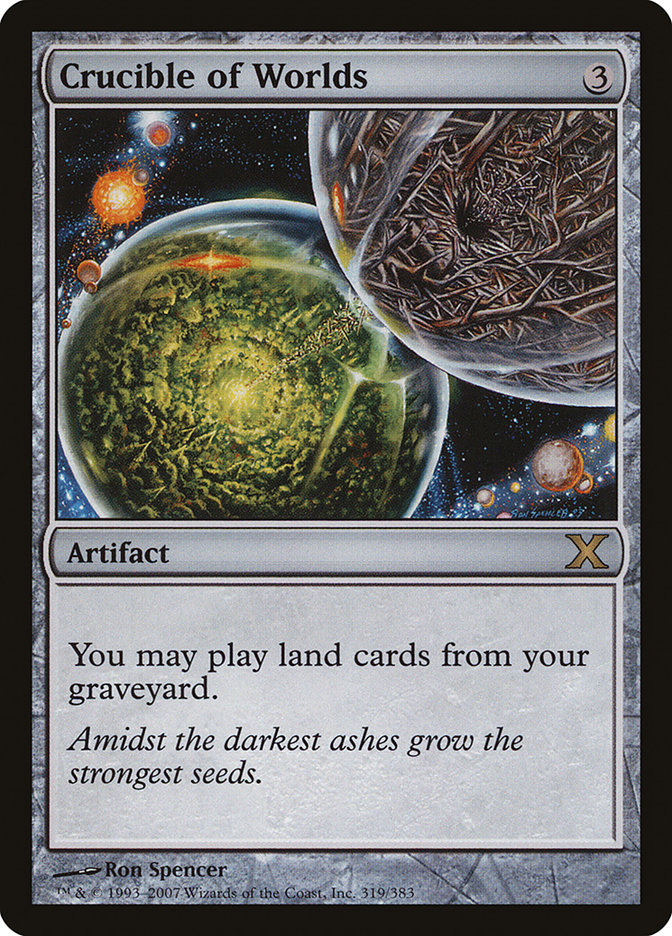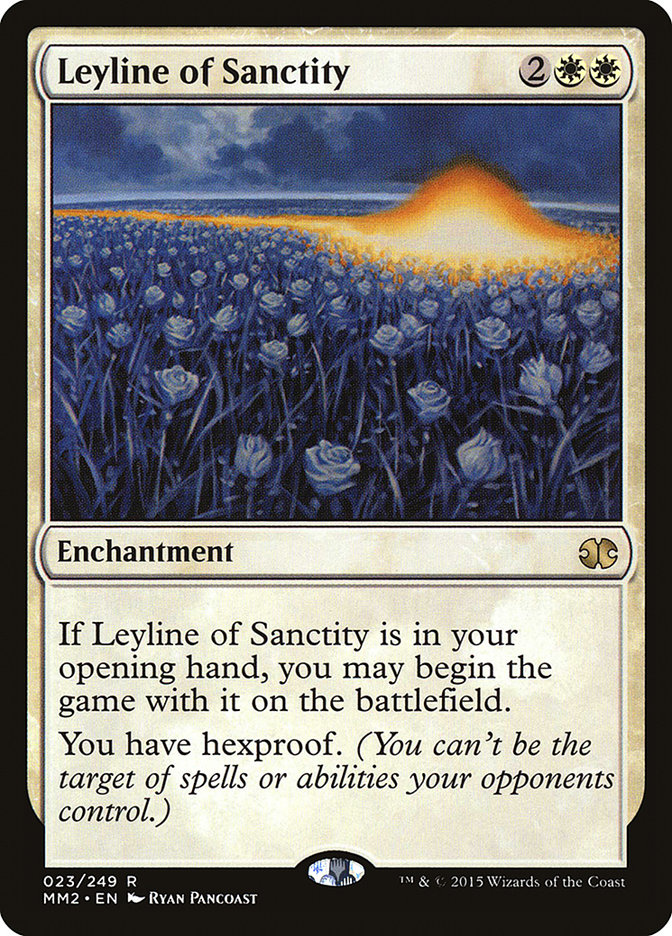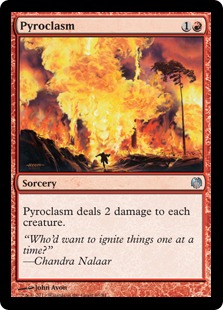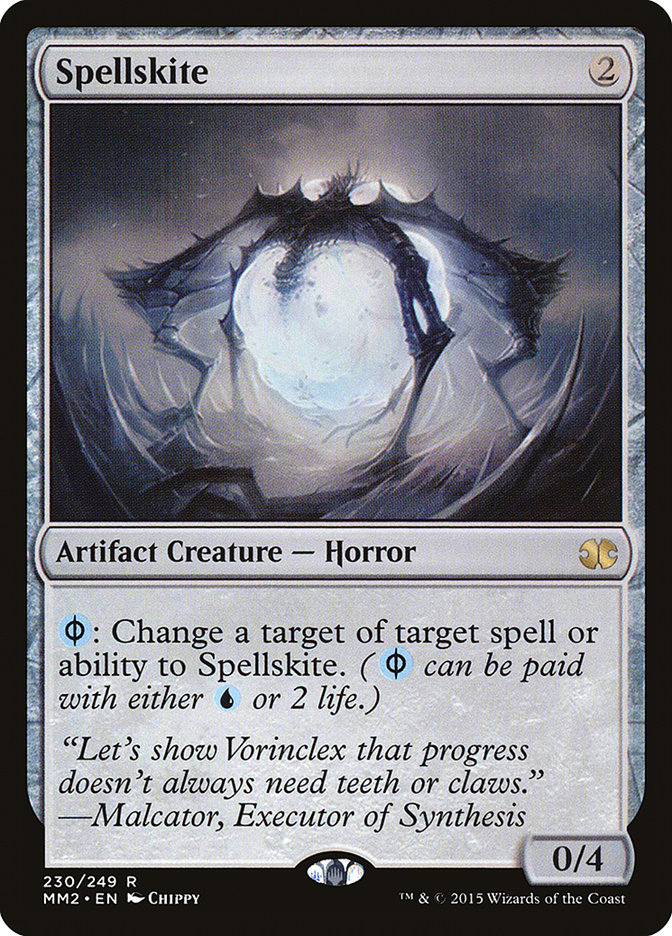Modern changes slowly, so the decks I like change slowly as well. With a Modern Grand Prix in Dallas coming up this weekend, I turn my attention to the format. Death’s Shadow has done very well for me lately, but the format has been shifting in a direction that I think could be great for my other deck of choice, Lantern Control.
Historically, Jund, Burn, Grixis, and Storm have been the decks that I least want to play against, and all of those decks look to be at historic lows, and with good reason. According to mtgtop8.com‘s metagame breakdown of the last two weeks, Dredge is twice as played as any other archetype, and the midrange control decks really struggle there. It’s very difficult to win Game 1, and then they need to have their sideboard cards line up properly against Dredge’s answers in the next two games, and just trying to compete costs them sideboard slots that are very valuable against the rest of the field. Storm suffers from splash damage due to the increased graveyard hate.
Burn, I’m less sure about. I assume it has problems with Gnaw to the Bone plus incidental blockers and a decently fast clock, and I know it did very badly on Day 2 in Milwaukee, so I’m willing to believe that things are just bad for it at the moment.
Again, based on mtgtop8.com’s numbers, those four decks make up a combined 9% of the field, which is probably under half of what I’d normally expect. That’s a great start, as long as they weren’t replaced by any new problems.
Most of the percentage of the fields lost by other decks in general has been picked up by Dredge. Dredge vs. Lantern is interesting. On the one hand, both players are in the business of milling the Dredge player, which sounds like a problem. On the other hand, Ensnaring Bridge is outstanding against Dredge. However, it’s not game over, since Conflagrate can easily win through it.
Dredge is the best deck at using Ancient Grudge, so a big factor is going to be how many Ancient Grudges the Dredge player has. Luckily, the industry standard, which is consistent among every list in my sample, is to play either one or two Ancient Grudges (with two being very slightly more common). That’s not that bad.
What I like about this matchup is that Lantern Control is a deck that wants to play Surgical Extraction maindeck and generally also has access to Grafdigger’s Cage in the sideboard, with Ancient Stirrings and the general card selection engine of the deck to help find it. On top of that, Lantern can obviously work to stop a Dredge player from finding their removal for Grafdigger’s Cage.
This is to say that Lantern is among the best decks at naturally playing and finding large numbers of hate cards for Dredge, and I would even consider adding a Tormod’s Crypt to the sideboard, just because zero-mana artifacts are so good anyway and recurring it with Academy Ruins makes it even better that it normally is.
In short, Lantern Control is a deck I already liked that benefits from recent metagame shifts and simultaneously benefits from new cards in Kaladesh.
While the core of Lantern Control is very consistent, it has a few flexible slots for tuning to a particular metagame, and with the addition of Blooming Marsh and Inventors’ Fair, the manabase is also in question.
I think I’d play something like this:
Lands (18)
Spells (42)

Let’s start by going over the lands, since that’s where the biggest change happened because of new cards. I was hesitant at first to include large numbers of the new lands, since I value Sea Gate Wreckage very highly, but I like it most against Abrupt Decay decks, and those are showing up in relatively small numbers at the moment.
Also, Inventors’ Fair’s sacrifice ability offers a reasonable alternative to get late game utility out of my lands, so it’s a pretty smooth transition, and the life I gain from Inventors’ Fair and save from Blooming Marsh over Llanowar Wastes is a welcome benefit against Lightning Bolt decks.
Accompanying these changes, I’ve minimized my red. Since I’m adding a colorless land in total, even after cutting a Sea Gate Wreckage to make room for two Inventors’ Fairs, something had to give. I’ve decided to cut red down to the activated ability on Pyrite Spellbomb and a single Ancient Grudge and Pyroclasm in the sideboard. I think it doesn’t really cost anything to have that much, since I want Grove of the Burnwillows as a painless green/colorless land anyway, so even with no red cards, I’d probably have at least nine red sources. Ten feels a little light for Pyroclasm, but it’s so great when it’s good. Still, I’d be open to considering dropping it entirely.
Recently, I’ve played a Forest and Swamp in the sideboard to make my Ghost Quarter more flexible and minimize Blood Moon against me. I’ve liked having the basics, but a basic Forest feels like an unnecessary luxury when I’m adding another colorless land. If I were to cut the Pyroclasm, I’d consider cutting a Grove of the Burnwillows for a Forest, and if I did, I’d likely cut the Ancient Grudge in the sideboard for another Nature’s Claim, which would hurt my Affinity matchup but help my Burn and Ad Nauseam Matchups (Ad Nauseam more or less only wins when they can stick a Leyline of Sanctity).
As for the spells, I knew I wanted to play a third Surgical Extraction maindeck because of Dredge. I could see playing four, but I’d prefer not to. Instead, I’m playing a second Pyxis of Pandemonium as a safer way to control the top of Dredge’s deck and additional protection against Ancient Grudge, replacing the fourth Ghoulcaller’s Bell, which is a lot riskier when my opponent will often be using their graveyard. It’s worth noting that there’s some tension here, as having more Surgical Extractions generally makes me want more Ghoulcaller’s Bells, but I think it’s a small enough factor that I can live with it.
Some players love Mishra’s Bauble in this deck, and it does a lot of good things. It lets you turn on Mox Opal on the first turn, which can really speed up your development, and it lets you scry/fateseal with a mill piece when you don’t have Lantern of Insight. With Inventors’ Fair, it should be even better, since it theoretically lets you start gaining life faster.
It’s really hard to evaluate whether Mishra’s Bauble is good or bad, since its impact on the game is generally very small in either direction. I wanted to figure it out for sure, so I tried playing four to see if it made the deck feel a lot better or a lot worse; I figured it should be more obvious if it came up more often.
The answer was that it was still hard to tell.
It does those good things, but it also obscures your mulligans, delays your topdecks, and interferes with your Ancient Stirrings. Say I cut a land and a Pithing Needle to make room for Mishra’s Baubles, which I did. Then, when I’m casting Ancient Stirrings, if I’m looking for a land or looking for Pithing Needle and I find a Mishra’s Bauble, that’s a lot worse. You’re never happy to take a Mishra’s Bauble with Ancient Stirrings.
Ultimately, it was hard for me to tell from the way it felt to draw Mishra’s Bauble, but I seemed to win less when it was in my deck, so I’m assuming it’s bad, which mostly makes sense to me. I don’t think you really need the speed bump it can offer much, and the cost feels consistent with the costs I’ve experience with Gitaxian Probe in decks where it feels like it should be good because your deck needs a small combination of cards, so a smaller deck should make it more likely to find those, but in practice it interferes too much with your searching and mulligans. Also, when you’re trying to control your draw when a Lantern’s on the battlefield, Mishra’s Bauble mostly gets in the way.
I still wanted to keep my curve low and turn on Inventors’ Fair quickly, so I went with the ninth mill piece in the last slot that I was least sure about. My second-lowest-confidence slot is the Infernal Tutor, which is problematically slow against Become Immense decks and also the only Spell Snare target in the deck, though Spell Snare isn’t that widely played at the moment.
Cards I could see adding include Thoughtseize, since there’s not a lot of Burn, but seven has generally felt like too much discard main; Surgical Extraction, but again, that’s a little too heavy on cards that attack hands; Spellskite, but I really like not having creatures in my maindeck; a nineteenth land, but I worry about losing to flood because I can’t get lands out of my hand quickly enough for Ensnaring Bridge; or potentially a maindeck Grafdigger’s Cage or Tormod’s Crypt. Probably Tormod’s Crypt. It’s a weird card to maindeck, especially since it competes with Surgical Extraction, but it has the advantages of Mishra’s Bauble with Mox Opal and Ensnaring Bridge, and you can often get a card’s worth of value from it eventually against a Snapcaster Mage or similar. It even offers a bit of protection against Become Immense.
As for the sideboard, the biggest change is also the one that I’m least sure about, because I haven’t actually tried it yet: the inclusion of one Crucible of Worlds. Seeing it accompanying a Ghost Quarter in the sideboard, you could think that my plan is to bring it in in spots where I’m trying to lock people out with Crucible plus Ghost Quarter, but that’s a fairly remote consideration.
The primary draw is actually Inventors’ Fair plus Crucible. Against any of the more grindy matchups, like any Abrupt Decay deck, a mirror match, or sometimes something like Tron, you can use Inventors’ Fair to find Crucible of Worlds (or Crucible and a mill piece to find Inventors’ Fair), and then start replaying Inventors’ Fair to tutor every turn, presumably quickly establishing a deep Codex Shredder / Lantern of Insight lock.
Additionally, because of the mill pieces, Crucible of Worlds just by itself means that you’d never miss land drops, which makes Sea Gate Wreckage, Academy Ruins, and Codex Shredder much more powerful cards, since they all have expensive activated abilities. This deck is designed to function with a very small number of lands, since it’s all cheap spells and empties its hand quickly, and, as mentioned earlier, drawing too many is a death sentence if it stops you from emptying your hand quickly enough against some decks. In the mid-game, though, this deck is also great at using all available mana, and Crucible of Worlds lets you keep playing lands despite your low land count, even while using Lantern of Insight to ensure that you draw a spell every turn.
Ultimately, I’m really optimistic about Crucible of Worlds, and I’m tempted to try it in the maindeck, but I’m concerned about the risk of adding another expensive spell against the fastest decks, and I feel like, with the metagame where it is right now, most of your losses will come to stumbling at all against Infect, Death’s Shadow, or Dredge rather than not having enough strength in the mid-game against slower decks.
The rest of the sideboard is pretty standard. I’m comfortable with only a single Leyline of Sanctity because drawing multiples in the early-game can be devastating, Crucible helps against the decks where I want it to prevent discard, and Inventors’ Fair helps against decks where I want it to prevent Lightning Bolt. The fourth Surgical Extraction feels necessary in this metagame, not just because of Dredge but because it’s one of the best things you can have against Tron; Valakut, the Molten Pinnacle; and the mirror. All of those seem to be trending up.
I tried minimizing Welding Jar at one point, thinking that I could just find more copies of things with Sea Gate Wreckage rather than protecting the ones I had, but it’s too easy to die when they kill your first Ensnaring Bridge, so I’m pretty sure you need at least two Welding Jars.
Ghost Quarter is very important against Tron and Valakut and good against Infect, Affinity, and Jund. I’d like to play a second in the maindeck, but the other colorless lands are just too good; still, I think it’s a very worthwhile use of a sideboard slot.
Sun Droplet is fantastic at what it does, and if Burn continues to decline, I could see cutting it, since Inventors’ Fair does a lot of its job. Still, they’re good together and the GP metagame is slow to adjust, so I’d still want one for this weekend, as I wouldn’t expect to play against zero Burn opponents.
Pyroclasm, as I mentioned, is precarious just because you’re a little thin with ten red sources, but with ten in the deck, it’s very likely you can hit one with Ancient Stirrings if you need to, and the upside of Pyroclasm is often enough to justify it if you’re in that spot with a Pyroclasm in your hand, which makes it play more like fourteen sources, which is fine, so I’d still play it for now. I think the alternatives are just too slow.
Ancient Grudge could easily become a Nature’s Claim, but I just can’t get away from the value of hitting it for free with a mill piece.
Spellskite is necessary against the Become Immense decks, and decent protection for your artifacts in other spots, and Grafdigger’s Cage is obviously needed in this metagame.
I feel very good about this list. I wouldn’t change more than one or two lands, one or two spells, and one or two sideboard cards, and I think this is a very solid choice for this weekend specifically, even if I think I’m more likely to play Death’s Shadow just because I’ve never had a bad tournament with it.



